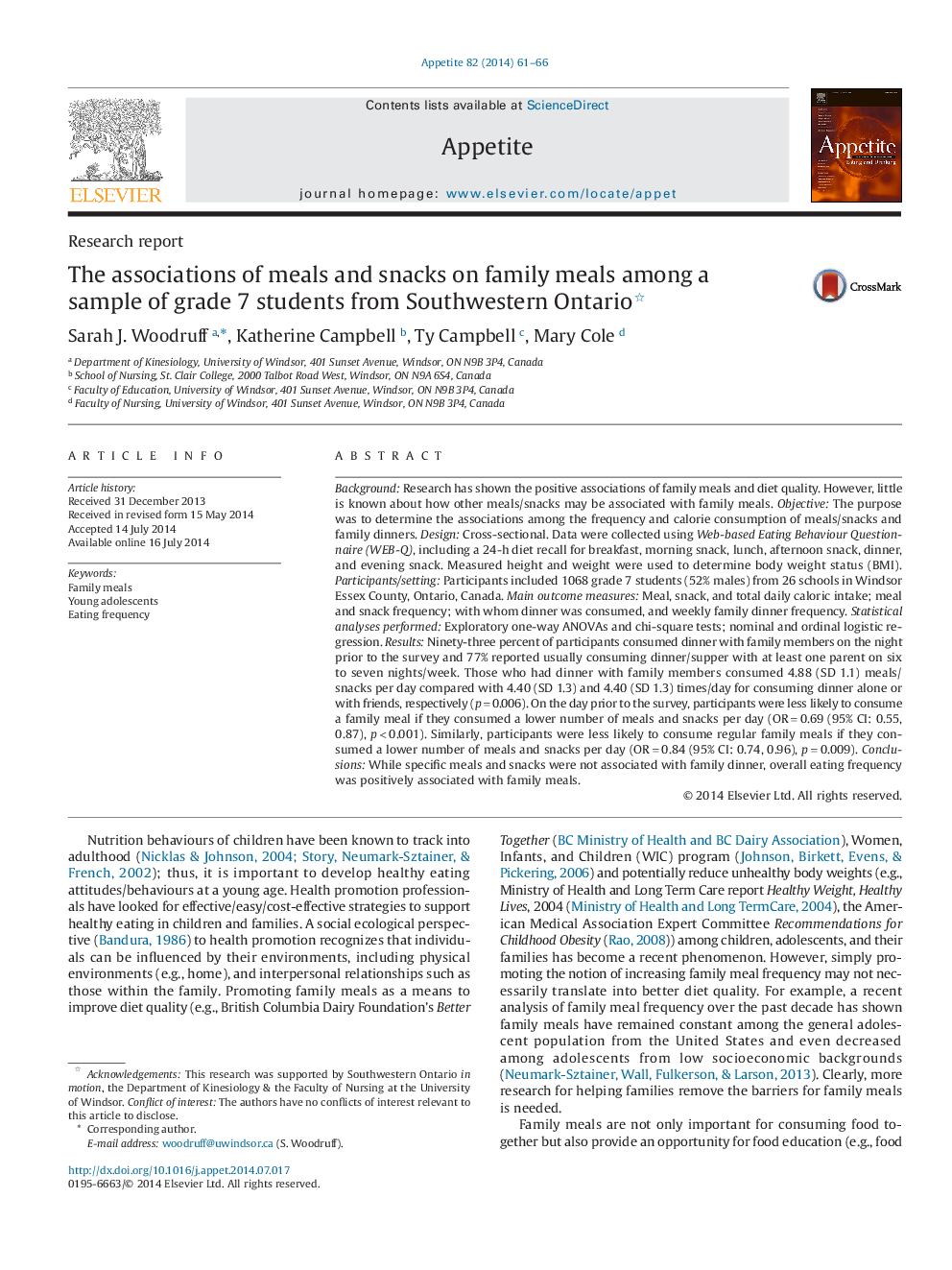| Article ID | Journal | Published Year | Pages | File Type |
|---|---|---|---|---|
| 939464 | Appetite | 2014 | 6 Pages |
•We investigated the associations among meals/snacks and family meals.•Those who had dinner with family members consumed 4.88 meals/snacks per day.•Specific meals/snacks were not associated with family dinner.•Participants ate more meals/snacks per day if they ate dinner as a family.
Background: Research has shown the positive associations of family meals and diet quality. However, little is known about how other meals/snacks may be associated with family meals. Objective: The purpose was to determine the associations among the frequency and calorie consumption of meals/snacks and family dinners. Design: Cross-sectional. Data were collected using Web-based Eating Behaviour Questionnaire (WEB-Q), including a 24-h diet recall for breakfast, morning snack, lunch, afternoon snack, dinner, and evening snack. Measured height and weight were used to determine body weight status (BMI). Participants/setting: Participants included 1068 grade 7 students (52% males) from 26 schools in Windsor Essex County, Ontario, Canada. Main outcome measures: Meal, snack, and total daily caloric intake; meal and snack frequency; with whom dinner was consumed, and weekly family dinner frequency. Statistical analyses performed: Exploratory one-way ANOVAs and chi-square tests; nominal and ordinal logistic regression. Results: Ninety-three percent of participants consumed dinner with family members on the night prior to the survey and 77% reported usually consuming dinner/supper with at least one parent on six to seven nights/week. Those who had dinner with family members consumed 4.88 (SD 1.1) meals/snacks per day compared with 4.40 (SD 1.3) and 4.40 (SD 1.3) times/day for consuming dinner alone or with friends, respectively (p = 0.006). On the day prior to the survey, participants were less likely to consume a family meal if they consumed a lower number of meals and snacks per day (OR = 0.69 (95% CI: 0.55, 0.87), p < 0.001). Similarly, participants were less likely to consume regular family meals if they consumed a lower number of meals and snacks per day (OR = 0.84 (95% CI: 0.74, 0.96), p = 0.009). Conclusions: While specific meals and snacks were not associated with family dinner, overall eating frequency was positively associated with family meals.
